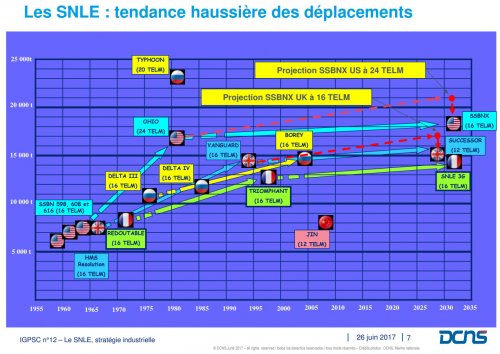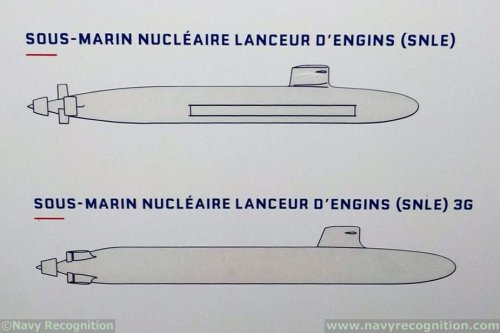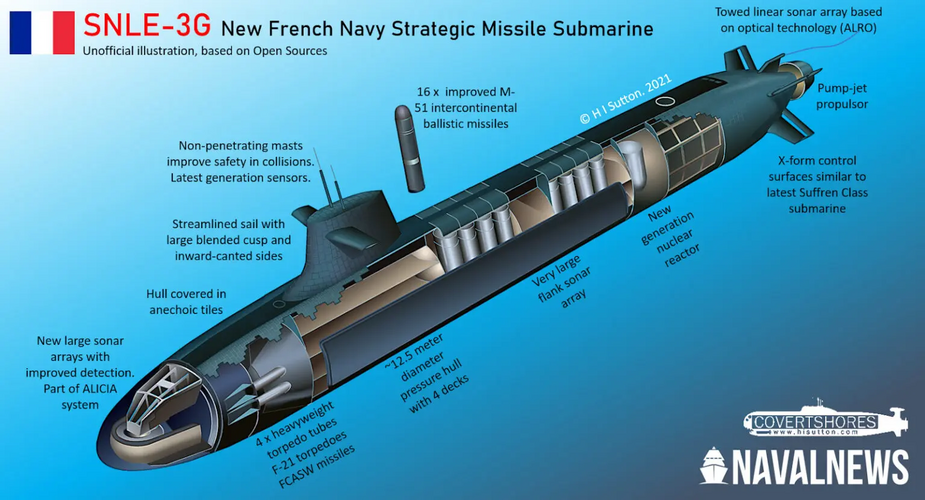The SNLE 3G is expected to be slightly larger than the
Le Triomphant-class, with a submerged displacement of approximately
15,000 tonnes and a crew complement of about 100. As was the case with its predecessor, the SNLE 3G will be fitted with 16 launch tubes and armed with the M51 family of SLBM, as well as with torpedoes and anti-ship missiles (AShMs) for self-defence purposes. The SNLE 3G will, however, have a new sonar suite intended to improve detection and help counter likely increased threats to future submarine operations. The yet-to-be-named class of SSBNs will also be fitted with a new and more powerful reactor, developed from the K15 model which is currently used by both the
Le Triomphant-class of SSBNs and the
Charles de Gaulle aircraft carrier.
In the interim period before the SNLE 3G enters service, the French Navy will receive an improved version of the M51, the M51.3, which is due to be introduced in 2025. The missile will use the same warhead design, the
Tête nucléaire océanique introduced in 2016, but will feature a revised third stage. France’s current SLBM, the M51.2, employs a solid-propellant third stage from the earlier M45 SLBM. The upgraded solid-propellant motor will likely increase the M51.3’s range beyond the reported
6,000 kilometre+ range of the M51.2, although the extent of this increase has not been made public. An M51 missile was
tested on 28 April 2021 by the French Directorate of Armaments (DGA), which is responsible for developing and procuring France’s new SLBM. The test launch was conducted from a submerged platform at the DGA’s
Essais de missiles site in the Landes region.
As for the further planned SLBM upgrade in the form of the M51.4, while there has been little public mention of this upgrade, part of the rationale for its development may be to try to ensure that the SLBM is capable of beating projected ballistic-missile defences. One option to help achieve this aim could include upgrading the M51’s current post-boost vehicle (PBV), which is derived from the earlier M45 SLBM. PBVs are small liquid-fuelled propulsion systems that can be used by missiles with multiple independently targetable re-entry vehicle payloads to release the warheads during the terminal phase of flight, allowing them to follow separate trajectories and thus to strike at different targets. An upgraded PBV could complicate an adversary’s missile defences through more dispersed targeting options, while providing the submarine-based nuclear force with greater targeting flexibility.











